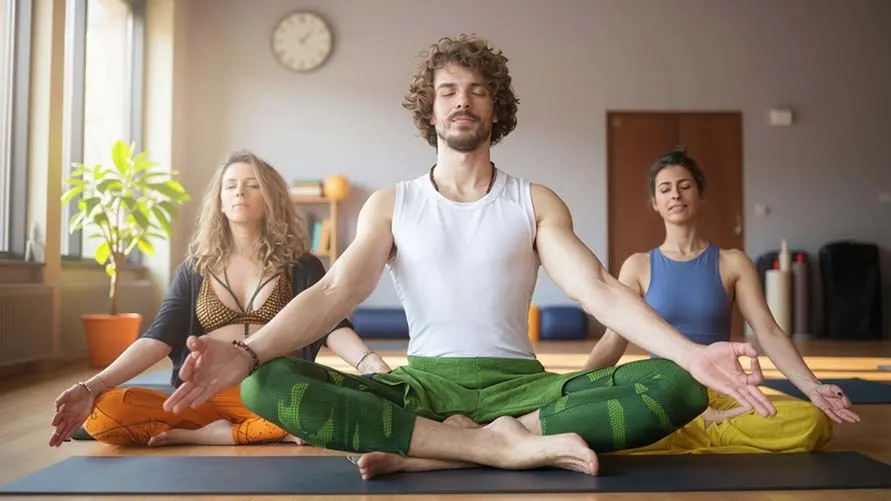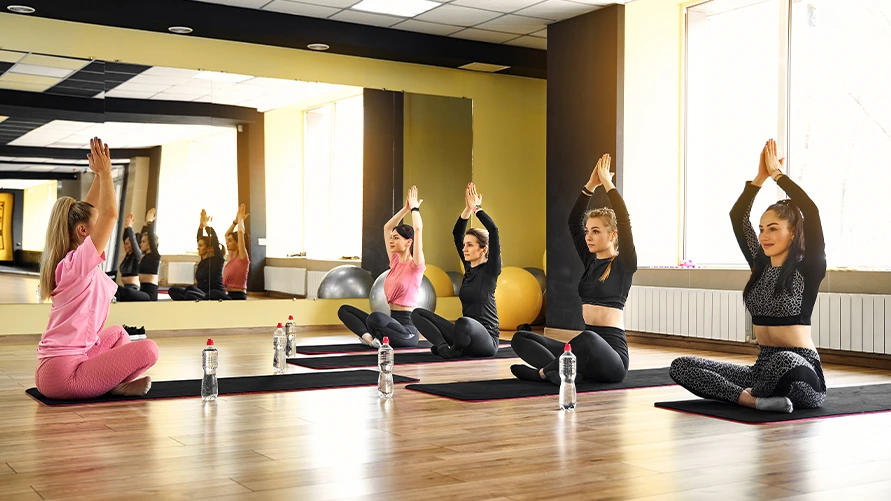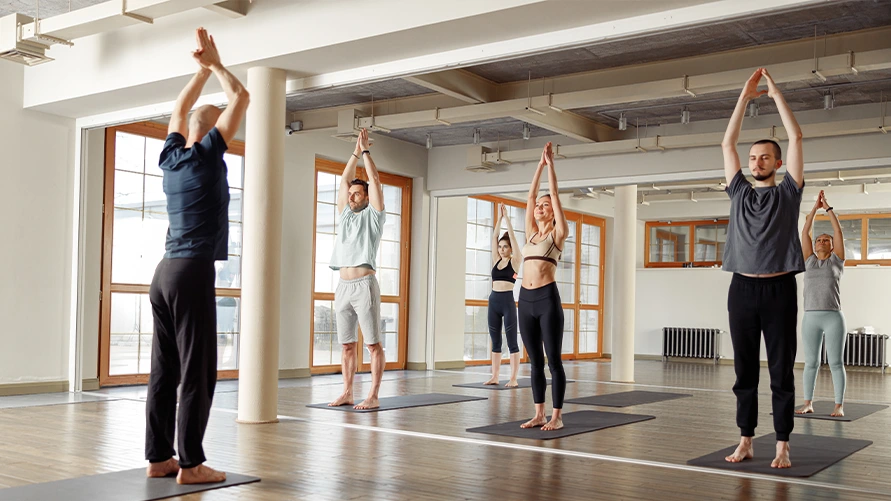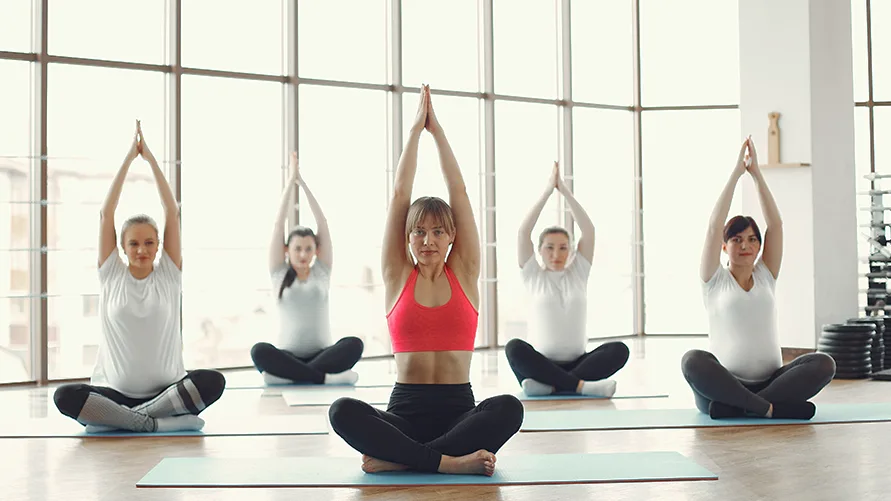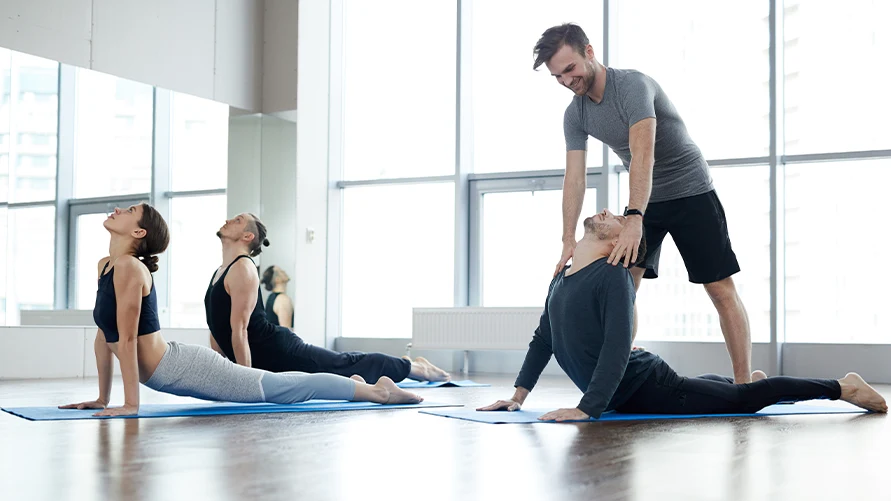There’s something deeply rewarding about watching a class full of students finding stillness and strength on the mats. But any experienced yoga instructor knows that behind those graceful flows and serene moments lies one of the biggest challenges: planning a yoga class.
It is not just about picking a few poses and filling the hour. Yoga students come with tight hips, anxious minds, uneven abilities, and unique reasons for showing up. And instructors carry the pressure of keeping everyone engaged while staying true to the philosophy of yoga.
Too often, instructors struggle with these two situations:
- Teaching the same, predictable sequence week after week, and losing students’ interest.
- Or overcomplicating their classes with disjointed postures that feel more like a workout than a mindful practice.
That’s where a thoughtful yoga class plan template comes in. Done right, it doesn’t just keep the class organized; it helps instructors balance student needs, movement principles, and a memorable experience all at once.
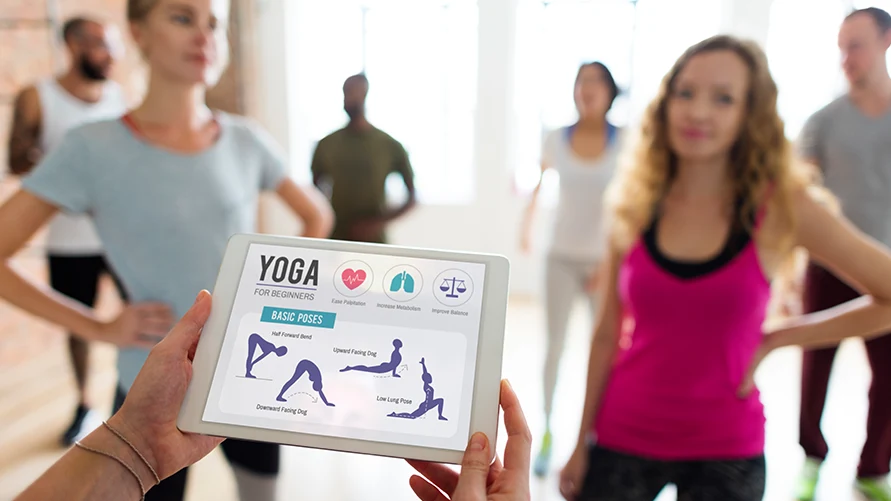
Here’s a smarter way to approach yoga class planning, one that helps keep students returning, your teaching purposeful, and your classes engaging yet accessible.
Most yoga class plans fall flat
Many instructors rely on generic templates pulled from the internet or repeat a teacher training sequence out of habit. But students today notice when a class feels uninspired. They notice when it doesn’t meet their bodies where they are.
Therefore, a good yoga class plan needs to be:
- Adaptive: Students’ bodies and moods shift. Plans should allow space for those realities.
- Intentional: Each pose should build toward something, a peak posture, a feeling, or a lesson.
- Engaging: Familiar enough to feel safe, but fresh enough to feel exciting.
That means your template needs more than just time blocks and pose names. It needs to help you think like your students. This way, you can guide them on a journey they enjoy progressing on.
Understanding students: Beyond the mat
Before even touching the mat, instructors should consider what students really need from their practice. A yoga class plan should reflect that.
Here are common concerns students bring to class, and how your planning can address them.
Physical needs
Most students have one or more of these realities:
- Desk jobs lead to tight hips, hamstrings, and shoulders.
- Fatigue after long days.
- Limited balance and core strength.
Mental and emotional needs
- Stress and anxiety relief.
- Time to disconnect from the screen and routines.
- Gentle encouragement to feel successful on the mat.
Varied abilities
- Beginners needing modifications.
- Advanced students wanting a challenge.
- Injuries or mobility limits need awareness.
A strong yoga class plan template prompts you to build with these layers in mind.
A smarter structure for planning yoga classes in advance
Here’s a reliable yet flexible structure instructors can use when planning yoga classes in advance. This keeps students engaged; while giving instructors the confidence to lead with ease.
Set the tone (5-7 minutes)
Start by creating a connection with the students and within themselves.
- Invite quiet reflection, perhaps with a mindfulness cue tied to the theme.
- Begin with seated breathwork, such as box breathing or simple diaphragmatic breaths.
- Add gentle warm-up stretches in a seated or supine position.
Themes help here. Even something as simple as openness, grounding, or letting go can shape your flow and give students meaning.
Build heat (10-12 minutes)
A thoughtful warm-up preps the body safely and connects breath to movement.
- Dynamic stretches, like Cat-Cow and lunges.
- Gradual activation with Down Dog and Sun Salutations.
- Focus on key areas students likely need: hips, hamstrings, shoulders.
This is where instructors can subtly gauge the energy of the group and adjust intensity if needed.
Main flow (30-35 minutes)
Here’s where planning makes the biggest difference. Every posture should progress logically and prepare for what comes next.
- Weave standing, balancing, and strengthening poses around your peak theme.
- Offer modifications and props to make the practice inclusive.
- Balance left and right sides, and use transitions that feel natural.
Example sequence:
- Warrior variations → Triangle → Side Angle → Revolved Crescent.
- Balance: Tree or Dancer’s Pose.
- Peak: Camel or Pigeon Pose, depending on focus.
Pro tip: Keep cues clear and tie them back to breath or theme; students remember how the practice felt, not how complex it was.
Cool down & close (8-10 minutes)
Never rush this part. It’s where the work integrates.
- Counterposes for the peak posture.
- Supine twists, Happy Baby, and hamstrings stretches.
- At least 3-5 minutes in Savasana, with a closing reminder of the intention set at the start.
Ending thoughtfully leaves students feeling complete, not rushed out the door.
Small details that make a big difference
Most blogs stop at sequencing. But the little things separate a good class from a great one.
- Plan for props, even if no one uses them. Having options builds trust.
- Cue awareness over achievement. Students feel more welcome when they know it’s okay to skip or modify.
- Pace appropriately. Energy shouldn’t spike and drop randomly. Think of your class as a bell curve, rising, peaking, then descending gently.
- Take notes forward. What worked? What fell flat? Who needed extra support? Adjust future classes accordingly.
- Check in with students. Even a quick chat after class can reveal what your students really value so that you can plan better next time.
A reliable tool to keep your classes on track
Keeping all these pieces in mind while handling multiple classes, students, and schedules can feel overwhelming. That’s why more yoga studio owners are turning to tools like yoga studio software to help them plan and manage classes with ease.
One of the trusted solutions for yoga professionals is Wellyx. This is because Wellyx yoga software is designed to make your classes, bookings, and scheduling seamless so that you can manage your classes effortlessly and stay ahead of schedule.
It helps you:
- Track attendance and see what resonates with students.
- Keep your teaching aligned with your business goals.
- Schedule and adjust classes effortlessly.
When classes run smoothly, students feel it, and they keep coming back for that great experience. And Wellyx yoga software helps you build just that.
If you are looking for the all-on-one system to grow business, then here is a complete list of best class booking software for yoga studios. Made a comparison, and choose the best option.
Final thoughts
Yoga classes are more than sequences. They are experiences. And thoughtful, intentional planning shows your students you care, not just about their bodies, but about their whole journey.
Use this smarter yoga class plan template approach as your foundation. It will help you build classes that feel unique, memorable, and meaningful for every student who steps on the mat.
Stay creative. Stay observant. And most importantly, keep teaching from the heart.
Need help keeping your classes organized and your studio running? See how Wellyx yoga studio software can help you run your classes with confidence and freshness.
